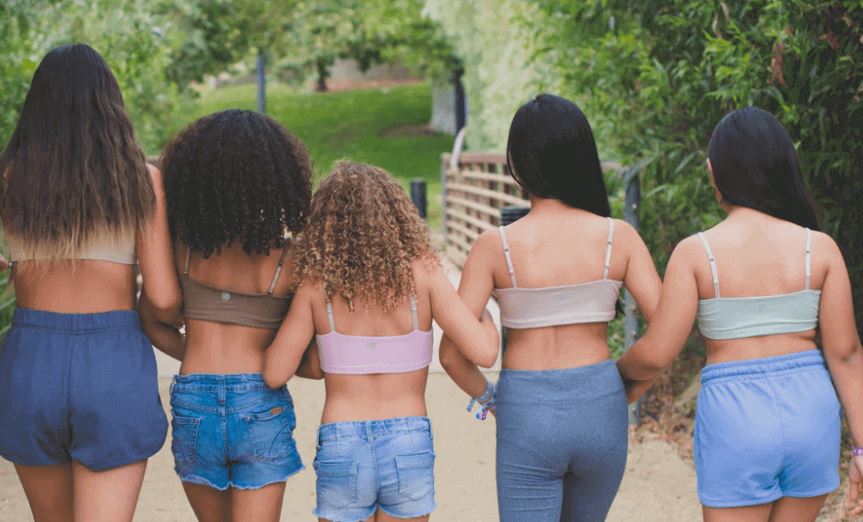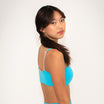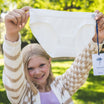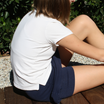Why Organic and Sustainable Bras Matter for Your Teen?

In today’s world, where environmental consciousness and personal health are increasingly becoming central to our lifestyle choices, the decisions we make about our teenagers’ clothing, including their intimate wear, take on profound significance. Among these critical choices, selecting sustainable and organic bras for your teen stands out not just as a matter of comfort but also as a commitment to promoting healthier environmental and ethical manufacturing practices.
In this in-depth exploration, we delve into the many reasons why choosing these bras is a pivotal decision for parents who are navigating the complex landscape of raising environmentally and health-conscious children, aiming to instill values that will last a lifetime.
Understanding Organic and Sustainable Materials
|
Aspect |
Organic Materials |
Sustainable Materials |
|
Definition |
Cultivated and produced without synthetic pesticides, fertilizers, or GMOs. |
Sourced, produced, and used in ways that minimize environmental impact. |
|
Key Benefits |
- Free from harmful chemicals - Safer for developing bodies |
- Reduces waste, pollution, and resource depletion - Environmentally friendly, economically viable, and socially equitable |
|
Impact on Health and Comfort |
Ensures fabric in contact with skin is natural and chemical-free, offering safety and comfort. |
Safe and healthy for the wearer, providing comfort and durability. |
|
Environmental Impact |
Minimizes the use of harmful chemicals, promoting a healthier ecosystem. |
Supports a greener future through responsible use and management of resources. |
|
Examples of Materials |
Organic cotton |
Bamboo, TENCEL™ Modal |
At the heart of the decision to choose organic and sustainable bras lies a deep understanding of the materials used in their production, which is crucial for ensuring the health and comfort of your teen while also minimizing the environmental impact.
Organic materials are distinguished by their cultivation and production processes, which are meticulously designed to avoid the use of synthetic pesticides, fertilizers, or genetically modified organisms (GMOs). This careful approach ensures that the fabric in contact with your teen’s skin is free from harmful chemicals, offering a safer and more natural choice for their developing bodies.
Meanwhile, sustainable materials are sourced, produced, and used in ways that minimize their environmental impact. They are designed to reduce waste, pollution, and resource depletion, ensuring that their use and management are environmentally friendly, economically viable, and socially equitable over their entire life cycle. Buying undergarments made from sustainable materials, such as bamboo and TENCEL™ Modal, ensures that the product is not only environmentally conscious but also safe and healthy for your child, supporting a greener future while providing comfort and durability.

Amazing Natural Options
Beyond organic cotton, alternative natural fibers such as hemp and bamboo present their own unique benefits. Hemp, with its remarkable durability and minimal environmental footprint, requires significantly less water and no pesticides to thrive [1]. Bamboo, celebrated for its inherent softness and antibacterial qualities, grows rapidly without the need for chemical interventions, offering a sustainable and eco-friendly alternative.

Ethical Manufacturing and Certifications
The journey toward ethical consumption and sustainable living extends into the realm of manufacturing practices and the certifications that validate them.
Let’s consider each factor:
- The ethical production of sustainable and organic bras ensures that workers are treated with respect, paid fair wages, and provided with safe working conditions, reflecting a commitment to human dignity and social justice.
- Certifications such as the Global Organic Textile Standard (GOTS) and OEKO-TEX® serve as beacons for consumers, guiding them toward products that adhere to stringent environmental and safety standards.
- The GOTS certification, in particular, offers assurance that textiles meet comprehensive criteria covering environmental, health, and social aspects throughout their production.
- Meanwhile, the OEKO-TEX® certification focuses on ensuring that products are free from harmful substances, offering peace of mind to consumers concerned about chemical exposure.
Durability of Sustainable and Organic Materials: A Lasting Choice
The natural resilience of sustainable and organic bras, untouched by the harsh chemicals used in conventional farming, means they can better withstand the rigors of daily wear and frequent washes without losing their shape or comfort. This durability is a testament to the quality of such materials, offering a practical solution for busy families who value both sustainability and convenience. By making this choice, you’re opting for clothes that will accompany your teen through their growth, not just in size but in their journey towards making conscious lifestyle choices.
To further extend longevity, it’s wise to educate your teen on top tips for bra care, such as how to wash and dry their undergarments appropriately.
Value for Money
At first glance, the price of sustainable and organic bras might seem higher than conventional options. However, when we consider the broader picture, the true value becomes clear. The longevity of these garments means you’ll buy less often, reducing the cost per wear and contributing to a more sustainable consumption pattern. This approach not only saves money in the long run but also teaches our teens the importance of investing in products that reflect their values and the world they want to live in.
Make the Switch to Sustainable Bras With Bleuet

At Bleuet, we’re dedicated to empowering young girls through our bras and apparel, designed for comfort and support. Our mission is clear: to offer the best options for girls, tweens, and teens as they navigate the changes of adolescence.
Our bras are crafted with the best materials and are gentle on the skin and the environment, ensuring every girl can move and grow with confidence. Standout products from our organic and sustainable range include:
- Iris Soft Cup: This pullover bra with optional light padding is designed in TENCEL™ Modal fibers, which are both compostable and biodegradable. It is available in a range of colors, is adjustable with no-slip straps for the ideal fit for your teen, and is OEKO-TEX® certified.
- Bleum Neutral Bamboo: These bamboo and cotton bras are double-lined for seamless coverage, have a reversible design for two undergarments in one, and are tag-free with minimal seams for enhanced comfort. They are also OEKO-TEX® certified.
- Aster Organic Racerback: A reversible and soft sports bra, this option is made of TENCEL™ Lyocell Organic Cotton Spandex Jersey. TENCEL™ Lyocell fibers are found in sustainable wood sources. Aside from also being OEKO-TEX® certified, these undergarments provide extra support with a wider band, have minimal seams, and zero tags.
Our diverse range is tailored to every girl’s unique journey, offering a perfect fit and style for all. Our sizes range from 8 to 24 and from AA to C cups. We also offer a 60-day free returns and exchanges policy to ensure complete satisfaction.
By choosing Bleuet, you’re not just selecting underwear; you’re investing in your daughter’s comfort and the planet’s future. Join us in making a positive impact! Discover your teen’s next favorite sustainable bra at Bleuet, where ethics and style meet.

Conclusion
Selecting sustainable and organic bras for your teen offers benefits that extend beyond personal health. By prioritizing organic and sustainably made undergarments, we instill in our children the importance of making conscious choices that positively impact both their well-being and the health of our planet. This commitment to conscious consumption fosters principles that will serve them for a lifetime, guiding them toward a brighter and more ecological future.
FAQs
What age should a girl start wearing a bra?
A girl should start wearing a bra when she begins to feel the need for one, typically around puberty, which can vary but often starts between the ages of 8 and 14.
Can a 13-year-old wear a padded bra?
Yes, a 13-year-old can wear a padded bra if she feels more secure or confident wearing one; it’s all about personal preference and comfort.
Is it OK not to wear a bra at 14?
It’s perfectly OK not to wear a bra at 14 if the individual feels comfortable without one; wearing one is a personal choice and depends on one’s own development.
Why does my daughter want a bra?
Your daughter may want a bra for several reasons, including physical support, seeking confidence, noticing body changes, or simply wanting to mirror peers or societal norms.









Leave a comment